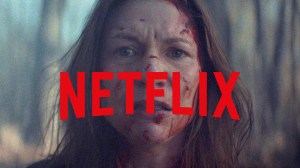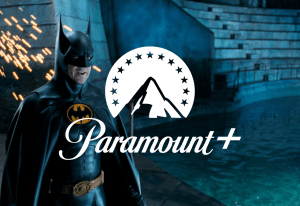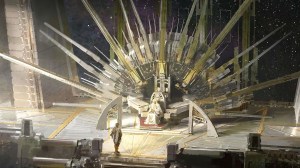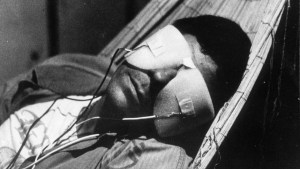Death is a “revolving door” in comics — it is a long-standing criticism that has only become more common as superhero deaths (and resurrections) have increased.
Videos by ComicBook.com
Of course, at the same time superhero deaths have become more common, so have things like reboots, relaunches, and deep-dive mining of character histories so that characters who had long been thought gone forever are making their way back into regular monthly circulation (we’re looking at you, Bucky Barnes and Gwen Stacy).
While death is often derided as a cheap stunt to drive sales, or something that “won’t last,” though, there are certainly times when it’s valuable as a storytelling tool, for a variety of reasons, or that it’s just so well-done that you forgive the crassness of the idea because of the elegance of the execution.
Err, no “execution” pun intended, there.
Here, we’ve collected our favorite deaths in comics, and will try and give you a reason for why we think they resonate so well.
Also: for the sake of argument, we excepted “group deaths” from this list altogether. So whether it’s Coast City, the Justice Society in Zero Hour, or Peter Milligan and Mike Allred’s X-Force, you won’t see those on here.
Serialized comics storytelling, after all, rests heavily on the long-term emotional investment readers have with the characters, and so the most effective deaths in comics tend to be the ones that can give each character their due.
We’ve also made this a superhero-specific list. There are certainly cases to be made for characters like Glenn Rhee in The Walking Dead or David Qin in Strangers in Paradise, but it’s easier to speak with authority on mainstream superhero books, and including books like those would open the door to arguments that we overlooked someting from Love and Rockets or Stray Bullets or Fables.
There are a lot to choose from, and we omitted some really good ones, so feel free to let us know your favorites in the comments below. This list is basically a combination of emotional impact plus long term impact plus quality of execution, so obviously a lot of that is very subjective.
SUPERMAN
Superman’s death is certainly the standard bearer here.
While it might not have the scale or scope of Civil War or Crisis on Infinite Earths, Superman’s death is, in the eyes of non-comic book readers, probably the biggest “event” in the medium’s history.
To comic book readers, the death and return of Superman saga is a well-known tale: a creature dug its way out of the ground in Ohio and started killing its way to the East Coast, opposed first by members of the Justice League (including Fire, Ice, Booster Gold, and Guy Gardner) and finally by Superman. As the creature reached Metropolis, the two pummelled each other to death in the street.
Shortly after the fact, four people arrived, each wearing Superman’s “S” and three of the four of them claiming to actually be Superman. Eventually, each of the replacements were shown to have ties to the “real” Superman’s past, and Kal-El returned just in time to stop one of those four — who had allied himself with the alien dictator Mongul — from destroying the world.
The Funeral For a Friend stories that took place between the big blockbuster action of Doomsday! and the rich continuity puzzle box that was Reign of the Supermen! were the emotional core of this story, and if you read it, that material most holds up to this day (admittedly, some of it is a little ham-fisted, but it’s The Death of Superman, what do you expect?). The actual Doomsday battle itself is the least interesting element of the storyline, and in hindsight has been criticized (not entirely unjustly) for being nothing but a big fight scene…
(So it’s been said, emulating the big, issue-long fight scenes that were dominating Marvel’s best-selling X-Men books of the time has been mentioned as one of the inspirations for the story, so that’s not an accident either.)
…but with The Reign of the Supermen!, the story got a little complex for casual fans and when you talk with some readers, or read online reviews, the feeling is that the creative teams had written themselves into a corner and were flying by the seat of their pants. Any serious examination of the story, though, shows that to be anything but true.
The death and return of Superman stories are essentially the capper on six years of the tightest, most cohesive continuity virtually any one line of superhero comics has ever had. From John Byrne’s The Man of Steel in 1986 until Jerry Ordway left the titles with 1993’s The Adventures of Superman #500, one could (and Roger Stern did) write a book that pretty clearly and coherently lays out how the “Doomsday! and beyond” stories touch on nearly every major concept introduced during that time, neatly “wrapping up” that era of Superman and providing longtime readers with an incredibly fulfilling experience.
For probably the best coverage of both the story and the behind-the-scenes aspect of The Death and Return of Superman that’s ever been assembled, you can cruise on over to From Crisis to Crisis: A Superman Podcast‘s Death and Return of Superman landing page. The work Michael Bailey and Jeffrey Taylor put into examining that era of the comics (and novels and radio play and direct-to-DVD movie) is remarkable.

CAPTAIN AMERICA
Following the events of Civil War, Marvel had surprised everyone by having no major character death in the final issue or two.
There had ben some losses, sure, but none of the major, headlining heroes whose death would give an event like Civil War its sesne of gravity. There hadn’t really been a “no more mutants” moment — one game-changer that would resonate for years — in the course of the story itself, outside of the high concept of the Superhuman Registration Act, which is an off-camera act not undertaken by the heroes.
Then, Marvel did something even more shocking: they killed Captain America while he was en route to court to stand trial for crimes committed during the event.
Killing Captain America would have been a big, surprising moment in the actual text of Civil War, but it likely would not have gone un-spoiled, and the impact of it could have been drowned out by the noise of the larger event going on around it.
Making it all the way to the end of an event like Civil War intact, only to be killed in a fairly pedestrian manner, in his own comic, almost immediately thereafter was a fairly unprecedented act — and what’s more shocking is that in this day of leaks, solicitations that spoil everything months in advance, writers whose self-promotion blows up 2/3 of all surprises, and a dozen other variables far beyond Marvel’s control, they somehow managed to shock the comics industry by getting all the way until the morning of release before the news broke.
Shock reverberated through fandom, and after months of speculating that either Captain America or Iron Man would die at the end of Civil War — and it would suck becuase of its predictability — Marvel had managed to fool people twice in a row, resulting in a shock death that actually provided shock.
DC would replicate that moment — with less success, but still pretty impressively — soon after, faking future solicitations in order to preserve the secret of then-Flash Bart Allen’s death, but the way Marvel had mastered it with Cap led only to a lot of admiring comparisons: “Wow, remember when they did this with Captain America?”
In hindsight, it’s certainly helped by the fact that the Brubaker run on Captain America, of which Steve Rogers’ death became the defining moment, is considered one of the best periods in the character’s publication history.

BARRY ALLEN
Barry Allen’s death in Crisis on Infinite Earths is one of the most famous, longest-lasting comic book deaths — and one that’s notable because for a whole generation of fans, Wally West is their Flash and Barry Allen was “more interesting when he was dead.”
Barry’s death is a heart-wrenching one, if only because he was one of the first characters to give the idea of retirement and a happy ending a try. Marrying Iris West, he headed to the far future to raise a family and have some well-earned peace…only to be called back into battle for a fight that would cost him his life.
While Marv Wolfman’s novelization of Crisis on Infinite Earths leaves a lot to be desired in other areas, it does a great job of plumbing the depths of Barry’s sorrow at never being able to see Iris again, and is a good supplement for those of us who grew up in the “Wally era” and want to get a sense for Barry at his best.
Honorable mention: During Crisis on Infinite Earths, Supergirl sacrificed herself to stop the Anti-Monitor — and while it wasn’t as significant to the story, or as thoughtfully executed, as The Flash’s death, her passing was remarkable for the way it underlined her heroism. Kara’s death was a line-in-the-sand moment for the heroes of the DC Universe, where she single-handedly battled back the Anti-Monitor to protect Superman, and it had even more power becuase it looked for a moment like she might actually win the battle and walk away — until a tragic tactical misstep brought her down.

DARK PHOENIX
“Jean Grey could have lived to become a god. But it was more important to her that she die…a human.”
That’s Uatu the Watcher from the end of The Dark Phoenix Saga, and while comic book fans know that Jean Grey has died and come back a number of times, that first death really stung with readers who believed they may have lost a founding member of the X-Men for good.
After being exposed to a solar flare during a mission in space, Jean Grey’s powers were significantly augmented — but at a cost to her stability. What would eventually come to be known as the Phoenix Force essentially took over her personality, making her one of the greatest threats the universal peace tht the X-Men would ever face.
In a lot of ways, the story could only have ended with Jean’s death — but given her importance to the team and to the history of Marvel Comics, it seemed almost unthinkable that it would. When she ultimately sacrificed herself and — against all odds — died a hero in the process, it was both a fitting end to one of the best X-Men stories ever told, and an emotional gut-punch to readers.

TED KORD
Let’s talk for a moment about the Keith Giffen/J.M. DeMatteis Justice League.
Following the Legends event in 1987, a new Justice League was formed. The previous incarnation had been out of commission for a while, and when Keith Giffen was brought on to revive the title, he was originally under the impression that he would have pretty much any DC superhero he wanted for the gig.
Not so, as it turned out; a number of popular characters, then either off the table or having recently undergone post-Crisis on Infinite Earths reboots, were not available for Giffen’s League. Eventually, he abandoned the idea of the “top-tier, all-star” Justice League in favor of almost the complete opposite: a team of also-rans and never-wases.
The series was a critical hit and, at first, a sales success as well. Viewing the characters as flawed humans who shared a workplace, there was ample opportunity for humor in the book — and eventually the humor started to get more and more prevalent as it became the thing people most knew the series for. The downside to that? Many of the characters, already not A-listers, were now becoming known primarily as comic relief.
Hardest hit by this misconception were Ted Kord — The Blue Beetle — and Booster Gold, both of whom were then-recent additions to DC’s publishing line (Beetle had come over from Charlton as part of an acquisition, while Booster was newly-created).
Years later, the characters still wrestled with it — and writer Geoff Johns decided to take that in a very meta direction when he launced into Countdown to Infinite Crisis, an 80-page story in which Ted discovers a deep, dark secret nobody else in the DC Universe has figured out yet…and can’t get taken seriously becuase he’s Blue Beetle.
Eventually, he traces a dark conspiracy to its roots and is murdered for his trouble, even as he gets one last “burn in Hell” in at his soon-to-be killer. Ted Kord, long a laughingstock both among fans and other heroes, died a badass and a hero, and against all odds this book made him a kind of “cause” for fans to rally behind, demanding his return. They wouldn’t get it for more than ten years.

COLOSSUS
Colossus’ death was so meaningful for the series, and handled so well in the issue, that it almost doesn’t matter that the cause of death/reason for his death is abject insanity.
The long-running plot thread of the “legacy virus,” a plague that infected only mutants, was constantly threatening either a global contagion or to be weaponized or at least for a major player to get it and die, was finally brought to a close in 2001 when it was discovered that there was a “universal cure,” but that it would only be activated after a single mutant injected themselves with it and, in so doing, gave their life to save the rest of mutantkind.
Even by comic book science standards, that’s a pretty inexplicable thing to happen — but like we said, writer Scott Lobdell actually managed to make Piotr himself go out a hero in spite of having had years of bizarre behavior brought on by writers who seemingly had no idea what to do with him. (“Is he a hero? A villain? Is he a kind-hearted giant, or an angry behemoth? The world may never know!”)
And, yes, there’s an element of “Oh, thank God it’s over” that informed this death. One shorthand for the Legacy Virus had been “Mutant AIDS,” since when the concept originated in 1993, the HIV/AIDS virus remained largely mysterious, nearly impossible to treat, and was perceived as largely impacting a small percentage of the population (the LGBT community). Legacy was similarly depicted, although its limitation to mutants-only was much more rigidly upkept for most of its existence than HIV’s prevalence among the gay community.
The idea of a Legacy Virus cure rarely took center stage in the books, but it was there on and off for nearly a decade, and at some point along the way, audiences lost hope that there would ever be a coherent narrative to it.Colossus sacrificed himself to save mutantkind, and it not only gave him a fitting, heroic ending (for the moment) but it gave the readers an opportunity to feel like maybe if it gave them one great story, the whole Legacy Virus experience wasn’t for nothing.

SAVAGE DRAGON
Like with Superman, it’s less about the actual death itself than about the storytelling potential it opened up, what came next, and what it meant for the property here.
In Savage Dragon #150, the title character seemingly died at the hands of a new Overlord. Going back as far as the earliest issues of his Image Comics series, Overlord was the most well-known and one of the most dangerous of Dragon’s villains, even though the suit itself had changed hands a couple of times.
What Dragon himself didn’t know at that point was that he was in fact a brutal alien dictator whose identity and memories had been wiped from his body by the people of his race. Just in case he ever “woke up,” they dumped him off on a nearby planet to be somebody else’s problem, too. That planet was Earth, and Dragon ended up being a distinctly different person from Emperor Kurr.
Until he was killed.
His remarkable healing factor eventually knit his body back together, but the mind that accompanied it was Kurr’s. He went on a homicidal rampage that was only ended after one of Dragon’s most powerful foes teamed up with a different version of Dragon to kill Kurr.
Even so, the Dragon that remained after all was said and done ended up facing charges for the crimes Kurr committed, and while his teenage son became the superhero and the series lead, Dragon himself headed to death row, where he allowed the government to strip him of his powers.
Savage Dragon #150 is arguably the most significant single issue in the series’ history in terms of its long-term impact on the book, and when it hit, the ending (of this story — it was a hundred-page giant with lots of backups) was a massive surprise.









